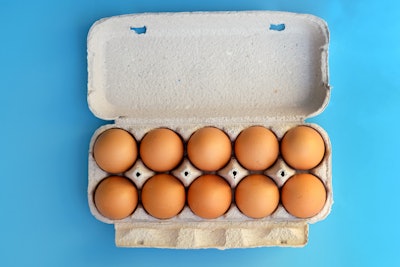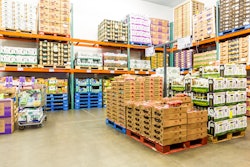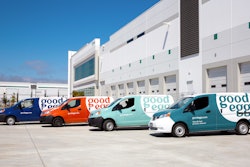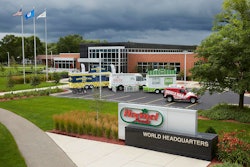
If you’ve spent time in a grocery store recently, you’re bound to have noticed the latest crisis to hit the shelves and it's sky-high egg prices. Eggs are practically a luxury item now with prices up 60% from last year. In some states it’s even worse than that. The average price for a dozen eggs has hit $7.37 in California which is 3 times that of a year ago.
Supply chains are still scrambled
This year consumers have felt the pinch of inflation as everything from clothes to coffee costs more than before. Every price increase comes from somewhere, and if we retrace our steps we’ll once again find snarled supply chains at the core of the issue. When major global events disrupt supply chains, there’s a subsequent domino effect that results in pervasive shortages, delays and inflation. Russia’s invasion of Ukraine ignited the soaring prices of gas, oil, grains and feed. This is especially detrimental considering chicken feed can make up over 50% of egg production expenses.
High egg prices are also being fueled in part by increasing demand, as more and more people look to replace beef and pork with healthier and cheaper forms of protein. Egg purchases always go up around the holidays as well with so many families cooking and baking. But while demand and the cost of labor go up, supply remains down in many parts of the world.
In New Zealand, new regulations for chickens have significantly reduced supply leading to what’s been deemed “The Great Egg Shortage.” Large numbers of residents have taken matters into their own hands and set up backyard chicken coops. So many people are buying chickens that the government is asking New Zealanders to stop noting that the cages are detrimental to bird health and emphasizing that chickens are not “egg machines.”
Bird-flu rages on
The pandemic and the egg-demic have something in common and that is the flu. Most devastatingly, a particularly bad strain of the avian flu has led to the deadliest outbreak in U.S. history, killing approximately 58 million birds in the United States and 43 million of which were egg-producing.
It’s not just the United States, in the UK, chickens and hens must stay inside until the outbreak subsides, in France, the flu has driven up egg prices by about 15%-20%, and Japan has culled more than 10 million chickens, ducks and ostriches. To put this in perspective, the previous largest avian flu outbreak in 2015 was described by the USDA as “arguably the most significant animal health event in U.S. history,” but it killed 10 million fewer chickens. The restocking and lost future production for that event ended up costing approximately $3.3 billion.
Right now, farmers are working extra hard to keep business moving and replace their flocks as quickly as they can after an outbreak. This process still takes months, from cleaning the facilities to bringing in new birds and is leading to the major roadblocks in production impacting supermarket shelves today.
An eggsistential crisis
Americans eat roughly 280 eggs per year. But unfortunately, high prices for basic grocery items are hurting low-income families and communities the most. As discount grocers also raise the cost of meat, poultry fish and eggs many people are left with few options.
Everyone has the right to healthy, consistently available and affordable food. That’s why eggs have always been such a popular choice. And even though there’s technically enough food on the planet for everyone, 10% of people are food insecure. The egg-demic not only reveals a budget problem but underscores how tightly connected and significant supply chains are in every aspect of our lives.
Consumers are wondering how long it will be until things return to normal and it looks like it could be some time. Demand for eggs is likely to ramp up again around Easter. Which means it could take several months for prices to cool down barring any new avian flu outbreaks, of course. But as inflation persists prices will still be a bit higher than consumers are accustomed to.
The solutions to these supply chain problems are out there, they just need to be identified via research, innovation and ongoing learning. This is a critical time for businesses to build resiliency by keeping up with supply chain best practices and expanding their expertise. Effective supply chain planning including for a sustainable food supply goes a long way and this hinges on accurate measurement and understanding of the stresses that exist within a network.



















